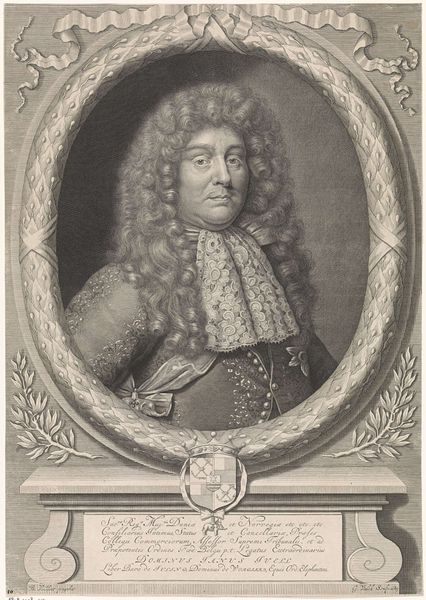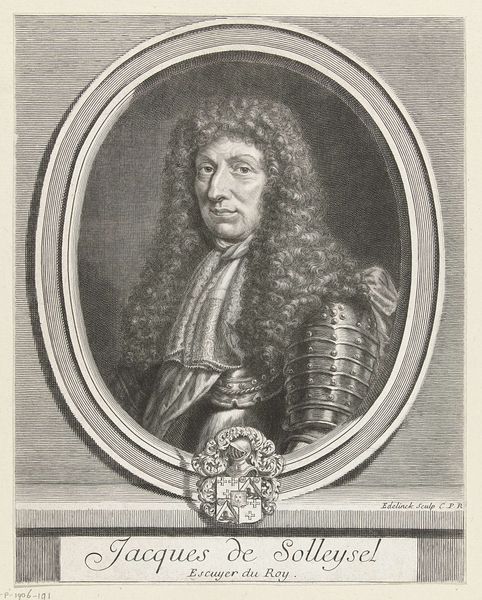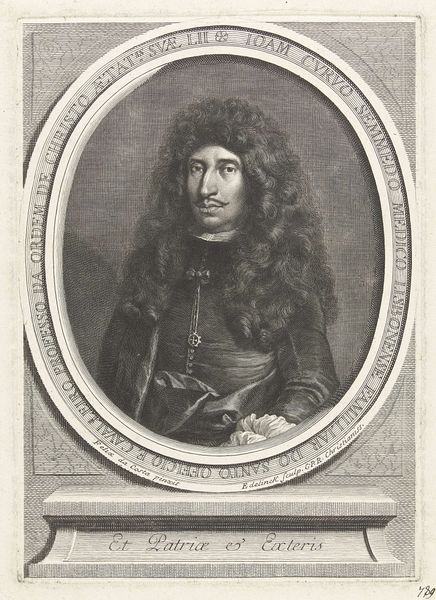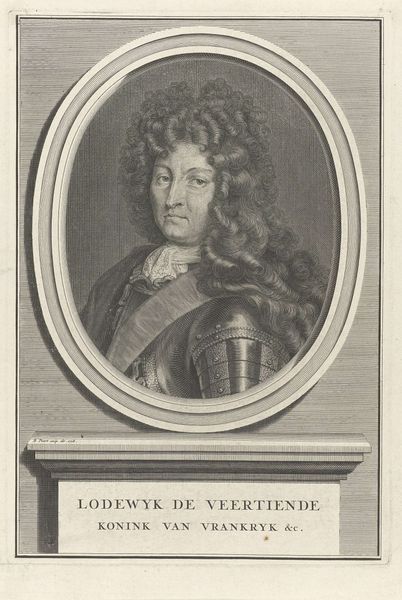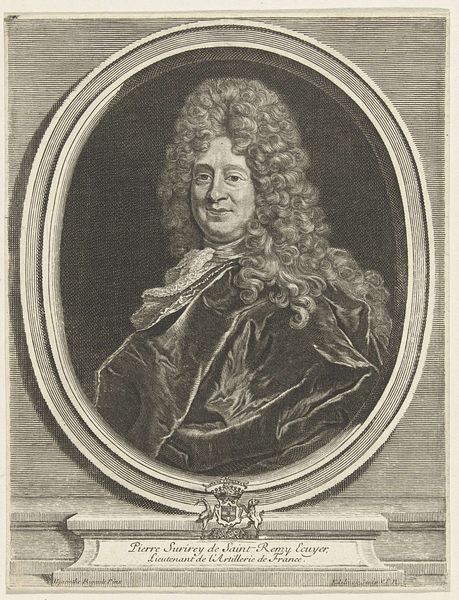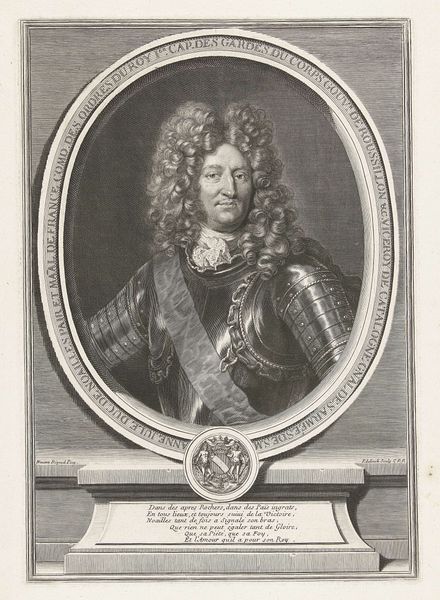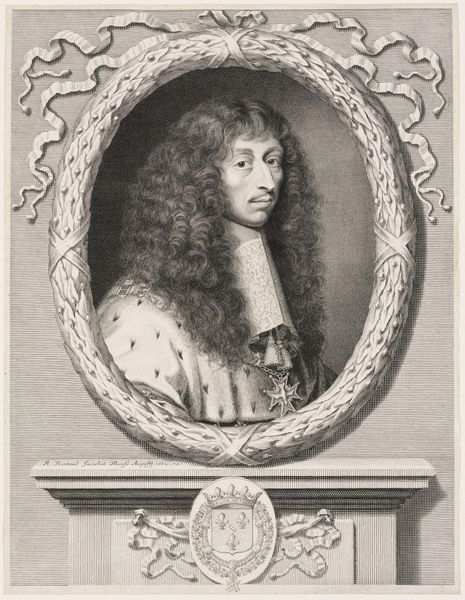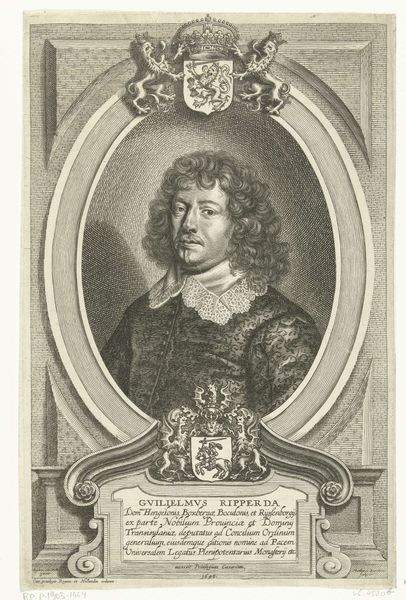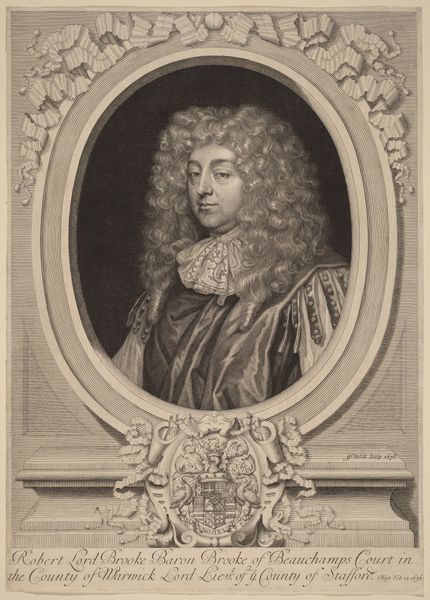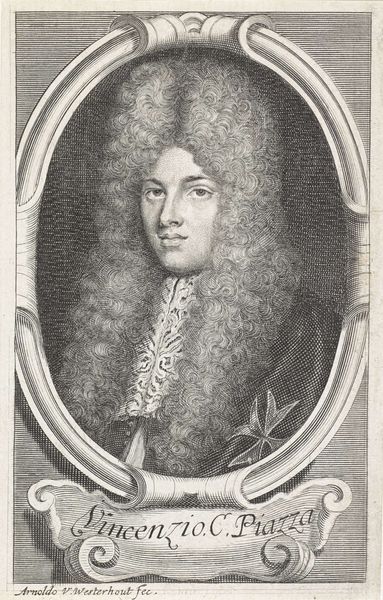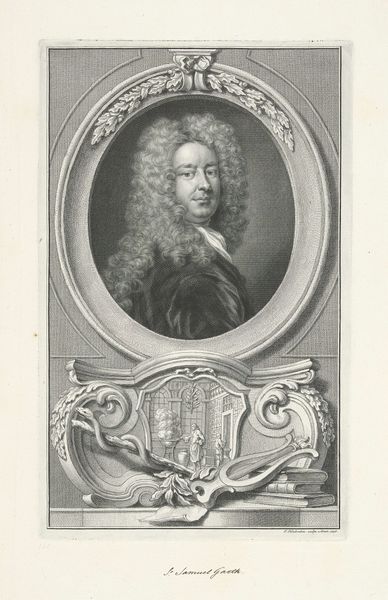
Portret van Lodewijk, Dauphin van Frankrijk, met borstkuras en rijkgeborduurde mouwen met florale motieven 1684
0:00
0:00
print, engraving
#
portrait
#
baroque
# print
#
history-painting
#
academic-art
#
engraving
Dimensions: height 443 mm, width 379 mm
Copyright: Rijks Museum: Open Domain
Curator: Here we have a Baroque engraving by Pieter van Schuppen dating to 1684, now residing at the Rijksmuseum. The piece depicts Louis, the Dauphin of France. Editor: It projects such a strange aura, doesn't it? The young man seems so soft, almost fragile, yet he's encased in armour. The elaborate floral patterns on his sleeve clash with the militaristic chest plate. It's unsettling. Curator: Intriguing how the contrasting textures create visual interest. Note how the fine lines of the engraving define not only the details of the armor but also the softness of his lace collar and the voluminous curls of his hair. Consider the use of line and the light playing across surfaces—a real virtuoso display of technique. Editor: Yes, virtuosity serving power. Look at the carefully inscribed oval frame around him; he’s positioned like an object to be scrutinized and judged. And the text framing his portrait--FILIUS LUDOVICUS MAGNI—amplifies his role as heir. It's not simply a portrait; it's a political statement about dynastic succession, carefully crafted to emphasize legitimacy. Curator: True, the composition guides the eye, moving it from the crisp inscription to the softened forms of the subject himself, ending up back at his controlled, almost blank expression. Editor: Precisely. Think about what's not represented. We don't see anything about his individual personality or potential for independent thought. The image reinforces patriarchal structures and inherited power while subtly questioning them through that melancholic, seemingly detached, expression. Curator: So the artist's hand crafts the subject into an artifact, a simulacrum rather than an organic subject, yet the rendering of fabric and hair softens that very effect and brings him back from abstraction into something resembling a subject, if only by a millimeter. Editor: Indeed, the tension between objectification and attempted personalization creates a dynamic space for analysis. I’m left wondering about his agency—or lack thereof—within that frame. Curator: Considering the craftsmanship, what initially appeared as a portrait reveals its subtle tensions. A study in contrasts indeed. Editor: Yes, and hopefully viewers will ponder the social complexities embedded within its aesthetic framework, too.
Comments
No comments
Be the first to comment and join the conversation on the ultimate creative platform.
